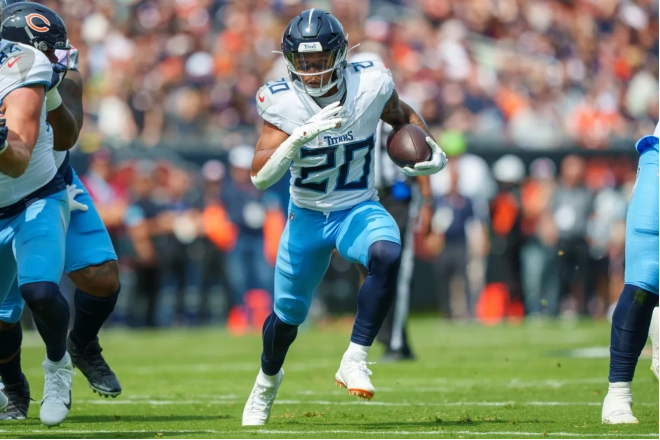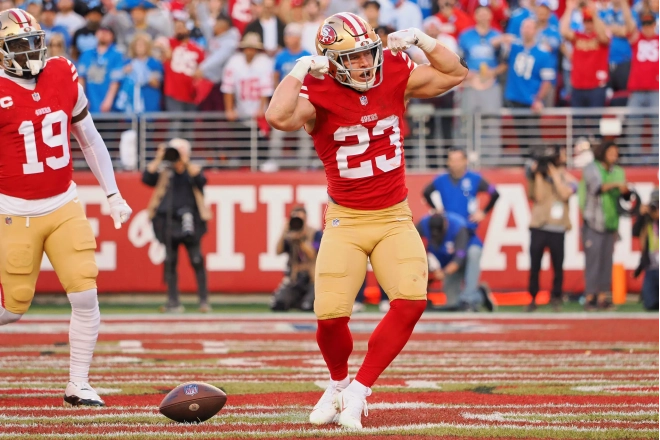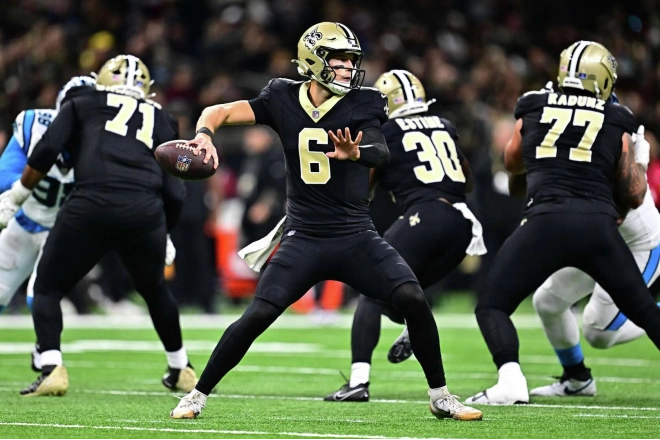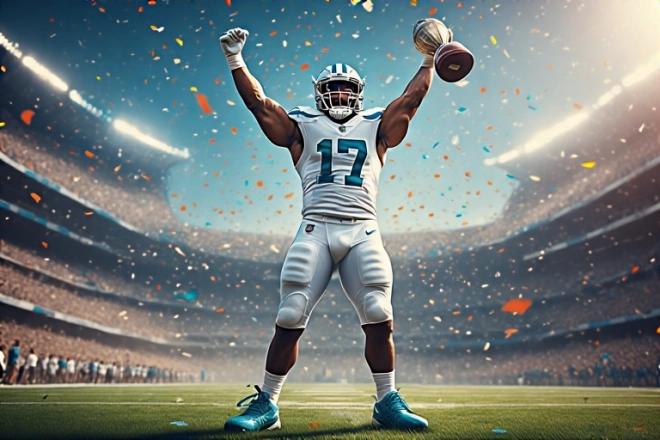Introduction
Your dynasty draft is the time of year when draft picks have the most value. Most fantasy managers are only focused on one thing: drafting rookies. But this is a mistake. Your draft picks have the most value this time of year because of the rookie hype and the excitement of adding these rookie prospects to the roster.
Except for top 1st-round picks, the most efficient action you can take with your draft picks is to trade them forward for more or higher future draft picks. This is hard to do because it's difficult to let a player you like slip by today to obtain more draft power in the future. But if the opportunity exists and your genuine goal is to build a dynasty, it's always the best action.
Another action you can take is to trade for players who are still developing and might be undervalued. The rookie shine wears off quickly, and there might be some sophomore or 3rd-year players that are on their way to being a stud. These players are still developing and are likely to get more opportunities this year.
This article builds on my previous four articles:
- How To Add A QB1 To Your Dynasty Team - '25
- How To Add An RB1 To Your Dynasty Team - '25
- How To Add A WR1 To Your Dynasty Team - '25
- How To Add A TE1 To Your Dynasty Team - '25
In the above articles, I analyze rookie draft pick success versus average draft position (ADP), player performance versus years in the NFL, and I review 2nd and 3rd year players to identify some that might be obtainable on draft day at a discount that might still develop into top players at their position.
I use my actual dynasty team to provide real examples of my successes and failures in applying my strategies. I don't assume to have any prospect scouting skills to identify the best prospects in my draft, rather, I heavily rely on math and statistics to tilt the odds in my favor. My team has been to the playoffs six years in a row, and I have the following picks going into my draft: 1.02, 1.09, 2.02, 2.09, 3.02, 3.03, 3.09, 3.11. I have also started to grow draft picks for the future, amassing four 1sts, three 2nds, and five 3rds for 2026 and 2027.
The core of my team going into 2025 is:
- QB: Jalen Hurts (Phi) and Bo Nix (Ind)
- RB: Joe Mixon (Hou), Brian Robinson (Wsh), and Jerome Ford (Cle)
- WR: Brian Robinson Jr. (Jac), Courtland Sutton (Den,) and Tee Higgins (Cin)
- TE: George Kittle (SF), Evan Engram (Den)
This article has four sections:
- Success Rate versus ADP
- Success Rate versus Years in the NFL
- Players to Trade For
- My 2025 Dynasty Draft Plan
Success Rate versus ADP
I have smoothed out the success rate vs ADP curves presented in my previous articles and assembled the following graph:
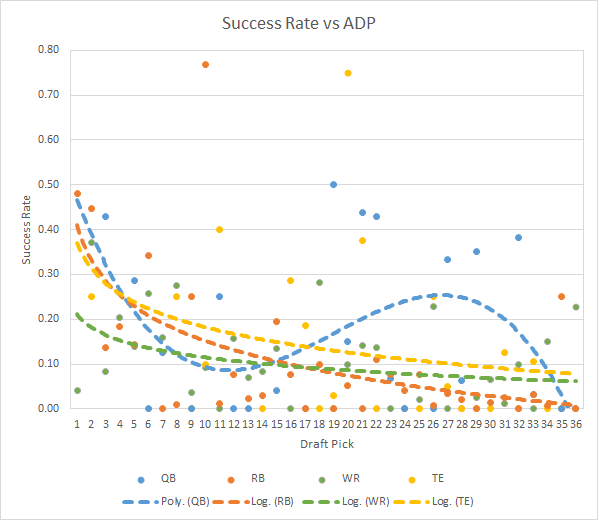
In my previous articles, I assigned values based on a player's ranking at the end of each of the last eleven football seasons. Because my starting lineup requires 1 QB, 2 RBs, 3 WRs, 1 TE (and a FLEX, K, and Def,) I used a different rating system for each position. Here are the rating systems:
- QB: 1 for top-6, 0.5 for 7-12
- RB: 1 for top-6, 0.75 for 7-12, 0.50 for 13-18, 0.25 for 19-24
- WR: 1 for top-6, 0.75 for 7-12, 0.50 for 13-18, 0.375 for 19-24, 0.25 for 25-30, 0.125 for 31-36
- TE: 1 for top-6, 0.5 for 7-12
Then I integrated the results of all players across all years and obtained "Success Rate" versus ADP. In the chart above, I smoothed out the results using best-fit polynomial or logarithmic equations.
Looking at these trendlines, I recommend targeting different positions at different points in the draft, based on the drop-off rate versus ADP.
QB Summary
The quarterback position has a strange trend line. For whatever reason, the success rate for drafting a QB is relatively high from the mid-2nd round to the mid-3rd round. The pattern has been consistent for years now. For example, I drafted Bo Nix last year with my 3.04 pick.
QB is the anchor of a fantasy team because it scores more points than any other position. Having anything less than a top-6 QB is holding your team back.
If your team is in desperate need of a QB, I recommend using a high 1st-round pick to get a QB1. If you don't have a high-1st or are just maintaining your QB position, then I recommend drafting a QB in the range of the middle of the 2nd round to the middle of the 3rd round.
With Jalen Hurts and Bo Nix on my roster, I only need to maintain my QB position, and might take a shot at QB such as Jaxson Dart (NYG) or Tyler Shough (NO) using one of my 2.09, 3.02, or 3.03 picks.
RB Summary
Running back has the trendline with the steepest drop-off.
I haven't had a top-3 pick since 2020, and interestingly enough, in which I drafted Clyde Edwards-Helaire (SF). However, in 2024, I bucked the trend in a good way by drafting the most successful RB of our league's 2024 draft (based on total season fantasy points) with my 3.11 pick, Isaac Guerendo (SF). However, it's worth noting that the best three rookie RBs of 2024 weren't drafted at all (in my league): Bucky Irving (TB), Tyrone Tracy (NYG) and Ray Davis (Buf).
Every team needs top RBs, and so, given the steep drop-off trend, I recommend drafting the RBs you need in the first half of the draft. If you have the 1.01 or 1.02, use it on an RB. Last year's RB prospects disappointed, but I believe the pool of RBs this year is stronger than last year's.
My team needs fresh young RB talent, so I will likely use my 1.02 pick to draft either Ashton Jeanty (LV) or Omarion Hampton (LAC).
TE Summary
Tight end has the second steepest drop-off rate after RB, and it has a high 1st round success rate.
In 2023, I drafted Dalton Kincaid (Buf) with my 1.07. He flopped, and my TE corps is aging. My team would benefit if I could add a young TE1 talent.
If your team is in significant need of a TE, I recommend picking a TE in the 1st round. If you are just maintaining your TE corps, then I recommend using the 1st round for more urgent needs.
WR Summary
Wide receiver (a misnomer) has the trendline with the least drop-off.
Last year, I drafted Brian Thomas Jr. with my 1.09, and so far, he has been one of the best picks of the 2024 draft.
Since the WR drop off trend is the flattest of all positions, I listed WR last because I recommend drafting WRs throughout the draft, except where you have a need you need to fill more, and you are in the sweet spot for that need at that part of the draft.
Specifically, I will likely use my 1.02 for an RB. I will be considering the best talent between RB, WR, and TE at 1.09 and 2.02. I will be considering the best talent between QB, WR, and TE at 2.09, 3.02, and 3.03. And finally, I will be considering the best talent between WR and TE at 3.09 and 3.11.
Years of Experience vs Success Rate
The following chart shows the success rate of players by position versus years of experience.
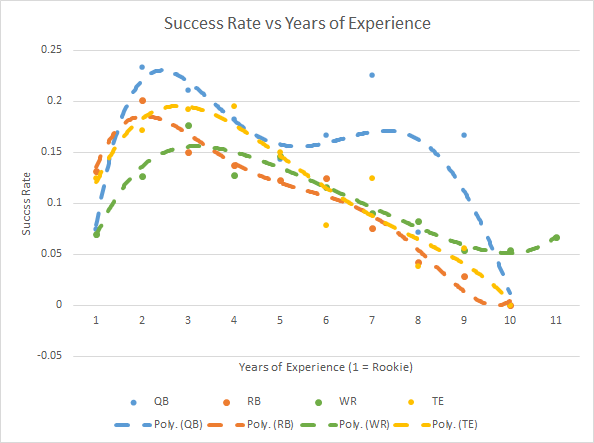
I used best-fit polynomials to generate the above trendlines. These trendlines can help you anticipate the decline of older players, so you can identify sell-high opportunities and identify the potential for a player to rise behind one of the players destined to fade, so you can identify buy-low opportunities.
QB Trend
QBs have a low 1st-year success rate (7%), but that changes dramatically in the second year (23%). Then from the 3rd year on, they tend to decline gradually. It's hard to determine whether there is a real 5th and 6th year slump and a second peak in the 7th through 9th years, or if this is just a statistical anomaly because there is sparse data.
In any case, QB has good fantasy football longevity.
The takeaways from this are:
- Target rookie and sophomore QBs if you want to add a QB efficiently
- If a QB isn't helping your team by the 3rd year, try to trade him away
- If you have a QB in his 8th or 9th year that is still performing well, it might be a good time to trade him away
RB Trend
RBs have a high 1st-year success rate (13%), rise in their second year (20%), and then steadily decline. They have the fastest drop-off rate of all positions.
The takeaways are:
- Target rookie and sophomore RBs if you want to add an RB efficiently
- If an RB isn't helping your team by the 2nd year, try to trade him away
- If you have an RB in his 7th or 8th year that is still performing well, it might be a good time to trade him away
WR Trend
WRs have a low 1st-year success rate (7%) and a three-year learning curve, where they peak at only 15%. However, once they reach their peak, they have the lowest drop-off rate going out to 11 years in the NFL.
The takeaways are:
- Target rookie, sophomore, and 3rd-year WRs if you want to add a WR efficiently
- With the low success rate and the need to fill the most starting slots, you need to draft or trade for more young WRs than for any other position
- If a WR isn't helping your team by the 3rd year, try to trade him away
- If you have a WR in his 10th or 11th year that is still performing well, it might be a good time to trade him away
TE Trend
TEs have a high 1st-year success rate (13%) and a 3-to-4-year learning curve, where they peak at around 20%. Then they tend to drop off at a steady rate until fading in their 10th year.
The takeaways are:
- Target rookie, sophomore, and 3rd-year TEs if you want to add a TE efficiently
- If a TE isn't helping your team by the 3rd year, try to trade him away
- If you have a TE in his 8th or 9th year who is still performing well, it might be a good time to trade him away
Players to Trade For
Based on the above statistical analysis and in trying to take advantage of rookie draft hype, I identified the following players you might want to try to acquire at a discount during your draft, depending on your needs and what players are available on the draft board:
- 1st round pick: Jaxon Smith-Njigba (WR, Sea)
- 2nd round pick: Drake Maye (QB, NE), Caleb Williams (QB, Chi), J.J. McCarthy (QB, Min), Michael Penix Jr. (QB, Atl), Jordan Addison (WR, Min), Zay Flowers (WR, Bal), Rome Odunze (WR, Chi) and Rashee Rice (WR, KC) and Tucker Kraft (TE, GB)
- Late-2nd/Early-3rd: Trey Benson (RB, Ari), Ja'Tavion Sanders (TE, Car), Isaiah Likely (TE, Bal), and Jake Ferguson (TE, Dal)
- 3rd round pick: Spencer Rattler (QB, NO), Keon Coleman (WR, Buf), Ricky Pearsall (WR, SF) and Xavier Worthy (WR, KC), Dalton Kincaid (TE, Buf)
- Late-3rd: Isaac Guerendo (RB, SF), Jonathon Brooks (RB, Car), Jerome Ford (RB, Cle), Dameon Pierce (RB, Hou), Jordan Mason (RB, Min), and Theo Johnson (TE, NYG)
- Waivers: Emanuel Wilson (RB, GB), Sincere McCormick (RB, LV), Cade Stover (TE, Hou), and Ben Sinnot (TE, Wsh)
I give a fuller analysis for each of these players and others that are not on the target list in the previous four articles.
My 2025 Dynasty Draft Plan
The purpose of my dynasty draft plan is to get the most success value out of each of my picks. So the first part of my strategy is to trade picks into the future for earlier and/or more picks. If I can't find a taker, then I try to use the pick to trade for a young veteran with a higher chance that they will help my team than any of the players available on the draft board. Then, if I can't find a taker for that either, I draft the best player on the board, keeping in mind the position-based success rates.
Specifically, here is my draft plan for my picks:
1.02:
- Plan A: Draft either Ashton Jeanty or Omarion Hampton.
1.09:
- Plan A: Trade it forward for a 2026 1st round pick of a team that I project will do poorly this year. I hope that I land the 1.01 or 1.02 2026 pick. Even with a random roll of the dice, I have a 67% chance the pick will end up higher than the current 1.09, and will therefore be worth more next year. Worst case, I could end up with the 1.12 and take a small step backwards. However, I am playing the odds, and if I project a team will do poorly in 2026, it's highly unlikely they will win the championship.
- Plan B: Trade it forward into 2026 for a first-round and second-round pick of a team that I project might do average or well this year. Even if I get the 1.12 and 2.12, I would still increase the overall success value of my draft picks.
- Plan C: Trade it for my target player, Jaxon Smith-Njigba.
- Plan D: Pick the best RB, WR, or TE available.
2.02:
- Plan A: Trade it forward for any future first-round pick.
- Plan B: Trade it for a target player: Drake Maye, Caleb Williams, J.J. McCarthy, Michael Penix Jr., Jordan Addison, Zay Flowers, Rome Odunze, Rashee Rice, or Tucker Kraft
- Plan C: Pick the best RB, WR, or TE available.
2.09:
- Plan A: Trade it forward for any two 2nd round picks.
- Plan B: Trade it for a target player: Drake Maye, Caleb Williams, J.J. McCarthy, Michael Penix Jr., Jordan Addison, Zay Flowers, Rome Odunze, Rashee Rice, or Tucker Kraft
- Plan C: Trade it for a player from the next set of targets: Trey Benson, Ja'Tavion Sanders, Isaiah Likely, or Jake Ferguson
- Plan D: Pick the best QB, WR, or TE available.
3.02 & 3.03:
- Plan A: Trade it forward for any future 2nd round pick.
- Plan B: Trade it for a target player: Trey Benson, Ja'Tavion Sanders, Isaiah Likely, or Jake Ferguson
- Plan C: Trade it for a player from the next set of targets: Spencer Rattler, Keon Coleman, Ricky Pearsall, and Xavier Worthy, or Dalton Kincaid
- Plan D: Pick the best QB, WR, or TE available.
3.09 & 3.11:
- Plan A: Trade it forward for any two 3rd-round picks.
- Plan B: Trade it for a target player: Spencer Rattler, Keon Coleman, Ricky Pearsall and Xavier Worthy, or Dalton Kincaid
- Plan C: Trade it for a player from the next set of targets: Isaac Guerendo, Jonathon Brooks, Jerome Ford, Dameon Pierce, Jordan Mason, and Theo Johnson
- Plan D: Pick the best WR or TE available
Then, after the draft, plan to use the waiver wire to pick up any of my waiver target players: Emanuel Wilson, Sincere McCormick, Cade Stover, or Ben Sinnot.
My goal is to come out of the draft with both a better team and a greater, more valuable arsenal of picks for 2026 and 2027. Out of my eight picks, I would like to come away with a top RB prospect, a top rookie or target TE, two WRs, a QB, and my waiver wire targets. I would also like to acquire two future 1st round picks and a future 2nd round pick. It's unlikely I will fully accomplish this goal, but it would be a huge success if I could pull it off.
Of course, orthogonal to this purely statistical study is to do my homework on exactly who I would draft at each point in the draft, for when I need to make a pick. However, my overall strategy does not depend on my ability to do a better job identifying top players than everyone else.
While your draft plan might not exactly match mine, I hope this article helps you think of a fuller draft plan for your dynasty team that includes a strategy for trading for future picks and young veteran players.
If you thought this article was helpful, then I also recommend the following articles:
- Are You Ready For Your Dynasty Draft? This article describes how my draft turned out last year using a similar strategy as described above.
- Dynasty Draft Strategy: A 21-Trade Salute: This article describes the trades I made last year, including in-season, to keep my team in the race and to make it competitive for the playoffs.
- Dynasty NFL: Who To Drop And How To Sell: If you need to cut players from your roster, it's great if you can trade them away rather than just drop them. This article is entertaining as it shows ways I promoted players to get them sold.

